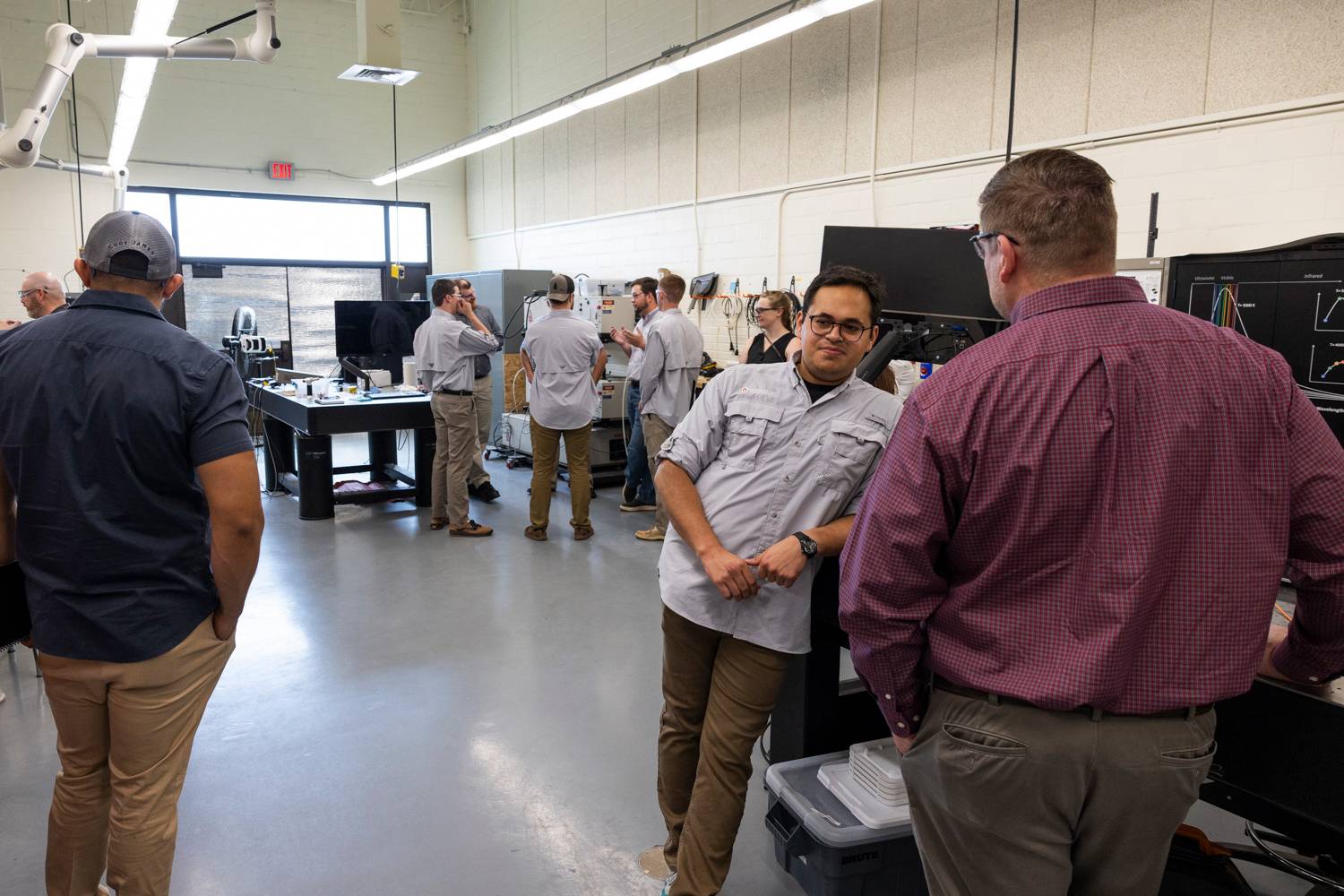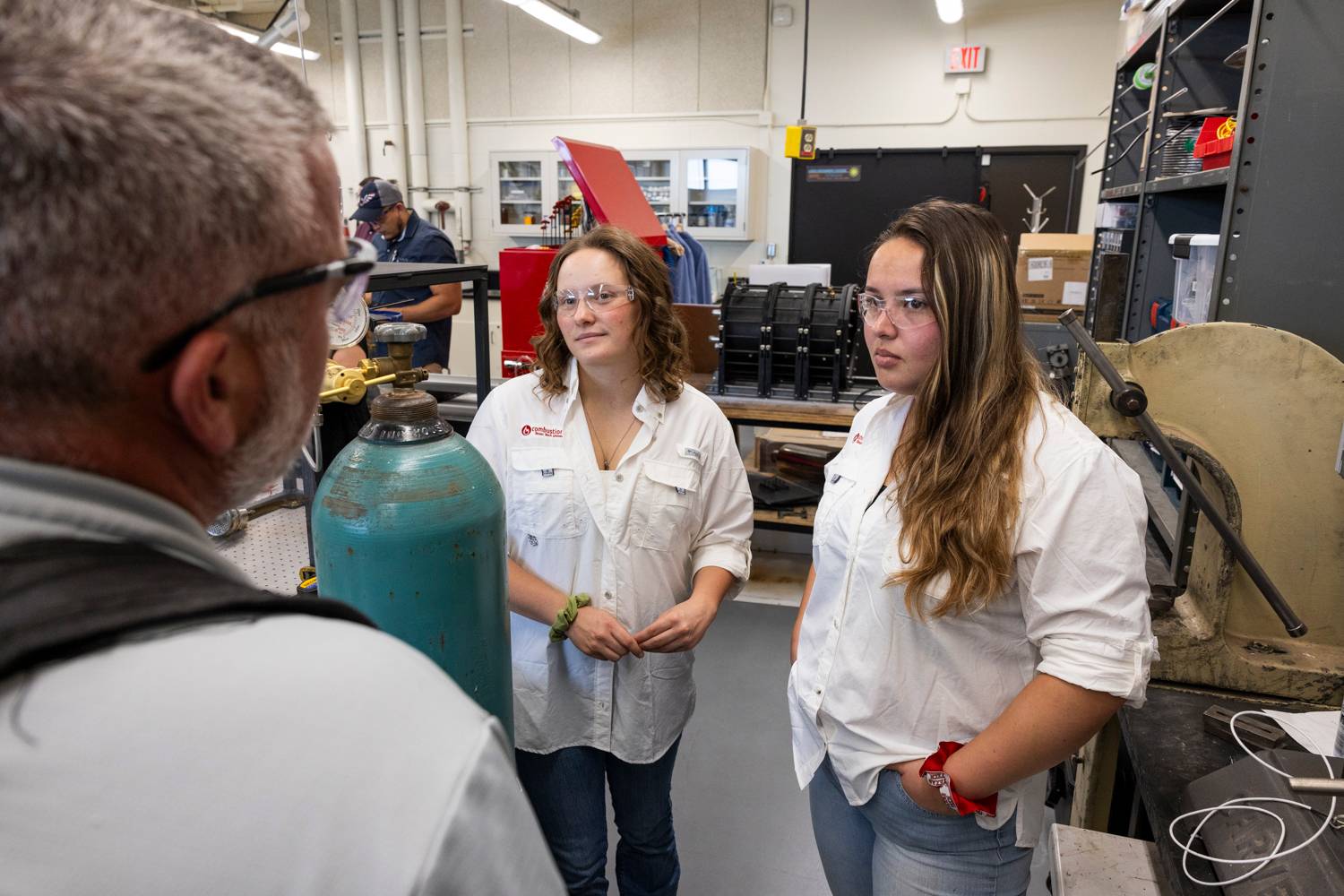A center involving Texas Tech and research being done in the Edward E. Whitacre Jr. College of Engineering is playing its part in securing our nation.

On this day 22 years ago, an event happened that forever changed our world.
In the days, weeks, months and years that followed 9/11, an unprecedented attack on the U.S. mainland, national security became paramount to the vitality of the country, our economy and our ability to remain a world leader. More than two decades later, national security remains a primary focus amid an ever-shifting landscape.
But research and training done right here at Texas Tech University and in conjunction with other high-level research institutions across the country is ensuring that the U.S. stays on the cutting edge of technology and has a workforce capable of providing our military and homeland security with the tools they need.

Take for instance the work being done by Michelle Pantoya and her lab.
Pantoya is a professor and the J.W. Wright Regents Chair in the Department of Mechanical Engineering. She runs the Combustion Lab and in closing in on the first year of a five-year project called EMBR (pronounced Ember).
EMBR, which stands for Energetic Material Basic Research Center, is a collaboration among Texas Tech, Purdue University, the University of Maryland (UMD), the Massachusetts Institute of Technology (MIT), Notre Dame and the Army Research Laboratory (ARL) built to help discover, design and scale up new energetic materials.
“EMBR is supported by the Army Research Laboratory,” Pantoya said, “and is a way to support student-centric research that advances new materials and new ways of studying energy that will ultimately protect our people.”
While the center is doing developmental research that could one day be employed by soldiers, it also is serving to rebuild the pipeline of innovators that has been lacking since the end of the Cold War.

“The effort from MIT, Purdue, UMD, Notre Dame and Texas Tech is to develop more than
advancements in science and engineering, but also to develop students interested in
careers focused on defense research in America,” Pantoya said. “We want to develop
people with proficiency in advanced technologies, based on energetic materials, which
are core to every system within our national security and defense sector.”
Among that pipeline are students like Joseph Micus and Cole Ritchie.
Micus and Ritchie are both graduate students in Pantoya's lab, and both have already done internships with Aberdeen Proving Ground, a U.S. Army research facility in Maryland.
“The work we do at Texas Tech really goes hand in hand with what we're doing there,” Micus said. “There's a lot of continued collaboration. For me, specifically, my project started at Aberdeen Proving Grounds, and then I was able to continue that work here, both by writing papers and doing further analysis and diagnostics on our materials.
“As a graduate student, sometimes some of the topics can be so niche in other laboratories. To be in a situation where I'm able to better my career and progress as a researcher, and at the same time contribute to real meaningful projects in the realm of national security, it's really important to me.”
Ritchie also worked with the ARL and believes the fundamentals he's learned at Texas Tech are crucial to understanding the workings of a major research facility.
“The lab experience has been amazing and really helps you prepare for those internships and eventually a job,” he said. “In fact, the experience inspired me to continue from my MS to a PhD.
“There is a lot of skill overlap that you may not think that you get in an academic research lab that does fundamental work. Then you go to a place like ARL, where there's applied work, and it's very valuable. The internship work has been very eye-opening.”
Remembering that day 22 years ago is reason enough to celebrate this type of work, and to praise the rebuilding of the workforce needed to keep our country, and our world, safe.
